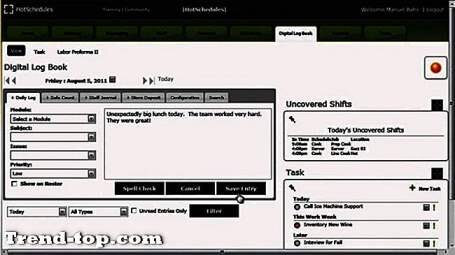
What Is A Valheim Devoted Server & Tips On How To Make One
In addition, he enjoys cooking and enjoying guitar, is an avid horror and sci-fi reader, and is a fan of black steel music. Download the

No hay productos en el carrito.
No hay productos en el carrito.

No hay productos en el carrito.
No hay productos en el carrito.

In most larger businesses, cost centers are a necessity, providing added value to a business. While they’re not designed to make a profit, they do enhance the profitability of a company by providing these benefits. But as important as it is to produce revenue, there are expenses involved in running your business as well. A cost center is an employee or a department within your company that performs those expense-bearing, necessary tasks.

Cost centrecan be any department or unit if the business which is responsible only towards the costs incurred by it and it is not responsible towards generation of the revenue or the usage of the assets. The cost which these cost centres incurs are aggregated into one cost pool and then allocated to the other units of the business. Organizations can improve accountability by assigning specific responsibilities to cost and profit centers and ensuring managers are held responsible for their performance.
On the other hand, an impersonal/machinery cost center isolates the costs of all non-employee costs. A company may be interested in only viewing the upfront cost, maintenance expenses, repair requirements, and other costs related to just the heavy machinery for a process. This type of cost center may coincide with other types of cost centers, as companies may want to know the non-personnel cost of a specific department, for example. Thus,cost centre are used by an organization for tracking all expenses related to a particular function. These departments does not generate revenue for the company but responsible for incurring cost for the company.
The performance of cost centers is typically evaluated based on their ability to manage expenses effectively and efficiently while meeting the organization’s needs. A cost center is a department or function within an organization that does not directly add to profit but still costs the organization money to operate. Cost centers only contribute to a company’s profitability indirectly, unlike a profit center, which contributes to profitability directly through its actions. Managers of cost centers, such as human resources and accounting departments are responsible for keeping their costs in line or below budget. Examples of cost centers might include the marketing department, human resources, or the IT division. Cost centers are vital in tracking expenses and allowing managers to optimize operations within that area, using tools like Wafeq to ensure financial control and alignment with company objectives.
The decision-making authority of cost and profit centers can vary significantly, reflecting their distinct organizational roles. Payroll must be processed when it’s due, taxes must be paid, and company performance must be regularly analyzed to keep expenses to a minimum while maximizing revenue. That’s why the accounting and finance cost center is so important to Debra’s business.
When choosing between a cost center and a profit center, organizations should consider the center’s purpose, accountability, revenue potential, costs, industry, and organizational structure. Profit centers are responsible for generating revenue within an organization. Profit centers can help organizations 3 2 gpa colleges: see schools that accept a 3.2 gpa page 1 grow and expand their business by identifying and exploiting new revenue streams. Encourage innovation in profit centers to help them identify new revenue streams and expand their product or service offerings. It can be achieved through brainstorming sessions, ideation workshops, and other strategies.
A cost center is a business unit that is only responsible for the costs that it incurs. The manager of a cost center is not responsible for revenue generation or asset usage. The performance of a cost center is usually evaluated through the comparison of budgeted to actual costs.
By separating out groups, even groups that do not make money, department leaders are put in charge about managing their team’s finances. It is acknowledged upfront that a cost center will be unprofitable; however, a manager can still be held accountable to the degree at which they operate at a loss. The impact of cost and profit centers on the balance sheet and cash flow statement can also differ. Cost centers typically do not significantly impact the balance sheet, as they do not generate assets or liabilities.
Locus Recognized In Gartner® Hype Cycle™ For Supply Chain ….
Posted: Tue, 01 Aug 2023 15:13:58 GMT [source]
Moreover, cost centers are accountable for controlling and avoiding unnecessary expenditures, as their primary objective is to support the rest of the organization cost-effectively. Customer service teams are one of the most common examples of cost centers because it’s their primary responsibility to ensure customer delight. These teams work closely with customers every day and make sure people are satisfied with their purchases. If a problem comes up, the service team is responsible for making sure the customer is happy and willing to return for another purchase.
A cost center is a reporting unit of a business that is responsible for costs incurred. An example of a cost center is the maintenance department of a business, where its manager is only rated on the amount of costs incurred to maintain facilities and equipment at a predetermined level. Similarly, the accounting, finance, information technology, and human resources departments are all treated as cost centers. In contrast, profit centers typically have more resources allocated to them, as their primary objective is to generate revenue and profits for the company.
Companies must also be mindful that having too many cost centers creates an administrative burden on tracking expenses and may dilute the usefulness of information. A service cost center groups individuals based on their function and may more closely refine the costs within a department. For instance, a company may feel an IT department is too large of a cost center and may want to break out employees by more dedicated services.
It requires no technology to encourage workers to identify unnecessary or redundant steps in manual processes. For existing employees that simply rub others the wrong way, offer them training or alternate job positions, or let them go if all else fails. A good example is a custodian or IT person who’s on your company’s payroll but doesn’t contribute to marketing or sales strategies. Again, these people may not be nurturing leads and closing deals but they’re just as important as any other employee. By breaking out cost center activities, a company can gauge the cost of administrative operating the business.

For this reason, cost-center accounting falls under managerial accounting instead of financial or tax accounting. A profit center is a reporting unit of a business that is responsible for profits generated. An example of a profit center is a subsidiary, which is responsible for the amount of sales generated, as well as all costs incurred. Similarly, a country division is also treated as a profit center, as may a product line. Some examples of a cost center include the accounting department and the legal department.
Cost centers come in handy here because adding their expenses together makes it easy to calculate total costs for your business. But, just like a good offensive line, every business needs cost centers to support internal operations and maintain customer delight. These functions are the backbone of the business and keep other departments protected and running like clockwork.

While serving as an effective management method, cost centers can help you better track business performance and related expenses, and if managed properly, can also help your business grow. For example, consider the various cost centers involved in the end-to-end order-to-cash process. Automation allows you to reduce the hours spent on these tasks or activities where little human intervention or real decision-making is actually required.
Companies can compare cost centers from different regions or teams to better understand the resources successful cost centers have and how they need to better support other areas. For example the advertising and purchasing departments of a manufacturer are considered costs centers. Cost and profit centers are essential tools for organizations to achieve their goals. Analyze profitability regularly to ensure that the profit center generates sufficient revenue to cover costs and contribute to the organization’s bottom line. HR and payroll cost centers manage the entire hiring process from initial job posting to reading applications and resumes, to managing the entire interview process. They also manage employee disputes, investigate complaints, and ensure your business complies with state and federal laws.
In this article, we will explore the differences between cost and profit centers, their roles in a business, and how they contribute to the success of an organization. A cost center can be a single person, such as the accounting clerk responsible for entering transactions into your accounting software application, or it could be an entire human resources department. Cost centers provide administrative and other support to revenue-generating activities. However for running this department there involves costs such as salary to accounting staff, software and hardware cots for facilitating them in maintaining the records etc.
In addition, he enjoys cooking and enjoying guitar, is an avid horror and sci-fi reader, and is a fan of black steel music. Download the
The clinician impact and financial cost to the NHS of litigation over pregabalin: a cohort study in English primary care PMC Please note that a
Trenbolone is a synthetic anabolic steroid that is commonly used by athletes and bodybuilders to enhance their muscle growth and performance. It belongs to Trenbolone
Empresa dedicada a la venta de Electrodomésticos de excelente calidad y a los mejores precios.